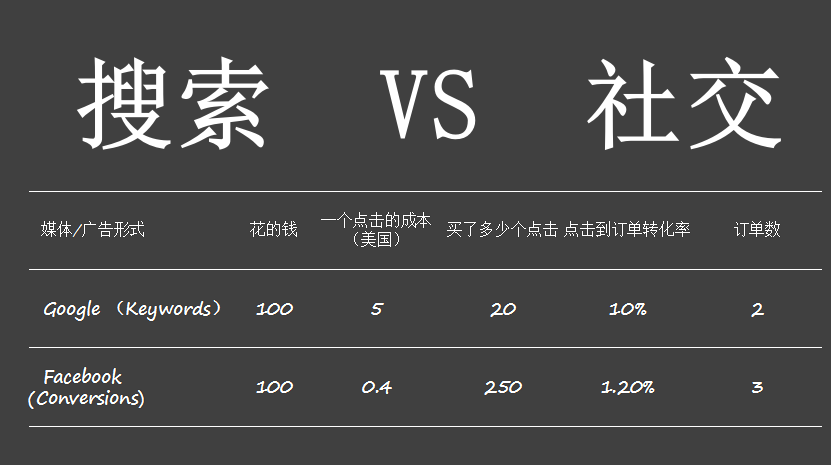After losing 100 million TikTok users in the United States, how can cross-border sellers join hands with social media advertising to renew their efforts?

Recently, news surrounding "Tiktok may be banned by the United States" has been one after another, and TikTok's US business remains unclear. Before being blocked by an unprecedented presidential executive order, TikTok's business achieved explosive growth in the United States and around the world. According to the TikTok indictment, it currently covers more than 200 countries, has more than 2 billion downloads worldwide, and has more than 100 million monthly active users in the United States.
In fact, behind Tiktok's amazing data is not only capturing a large number of users and fans overseas, but also gradually becoming a new marketing position for Chinese cross-border e-commerce sellers. So, the impact of TikTok's U.S. business blockade has on the cross-border e-commerce industry. With the loss of TikTok U.S., where is the focus of cross-border seller marketing channels in the future, and how should we evaluate the value of social media?
Losing TikTok America, cross-border sellers may focus more on overseas established marketing channels
Liu Xiaochuan, Senior Director of Social Channels of Dunhuang.com, told Hugo.com: “TikTok’s greatest impact on cross-border sellers is reflected in the coverage of traffic areas. Forced to adapt to this change, transfer the previous budget on TikTok to similar platforms, such as Facebook and Snapchat."

"In fact, any short video advertisement is always the same, that is, better localized content. The essence of social advertising is to help advertisers find the right customers and display the right content in front of users." Liu Xiaochuan observed, everything Products with good content production capabilities and more social attributes are often easier to succeed in short video advertising, such as cameras, drones, skateboards and other products with social communication attributes. In addition, it also includes some novel and peculiar kitchen supplies, which are cheap and practical and are more popular with consumers, such as machinery manufacturing, semi-finished product manufacturing, raw material production, office desks and chairs, etc. These products are not easy to stimulate users' desire to share on social channels. , More dependent on the creativity of the video content.
He further pointed out that regardless of the advertising platform, the more advanced the advertising system, the more refined the traffic cutting, which can not only help advertisers find more accurate content, but also provide richer advertising scenarios, and ultimately bring more High ROI and faster growth. In Liu Xiaochuan's view: "Social media traffic is mostly rooted in a highly interactive environment, which is different from traditional search advertising. It means that advertisers who use social media can interact and communicate directly with potential customers. However, under the influence of the cross-language and cross-country external environment, Chinese sellers need to break through the cross-regional and cross-language cultural barriers when selling their products and services on other people’s social media, in other words, the content gap. What about the future? Producing high-quality and disseminated content is the key and pain point that sellers need to think about."
From the most basic level, sellers need to be familiar with which sectors a social media campaign is made up of. Liu Xiaochuan shared the three core areas of target, audience, and content:
The first is the goal , which aims to analyze what the seller wants to do, find the goal and let the user pay;
The second is the audience , how to spend money on the ground, whether the system wants to find people who complete specific conversions, or let high-value customers see accurate advertisements themselves, and multi-dimensional considerations such as where the advertisements are displayed;
The third is the content and the specific presentation form of the advertisement, such as thinking about the style of the advertisement to be displayed in front of the user and which official identity is used to publish it. It is more detailed to the setting of copywriting, title, description and so on.
How do cross-border sellers evaluate the value of social media? Identify these 6 elements to a more "profitable" place
According to feedback from many cross-border sellers, there are not many sellers currently deploying TikTok business. The marketing channels of most cross-border sellers are still focused on platforms such as Facebook and Snapchat. Some sellers said: “Because TikTok's audience is mainly young people, the purchasing power of this group is not high, coupled with the fact that the shopping cart function has not yet been opened, and the impact of the US ban, the conversion effect of TikTok is not ideal. On the contrary, Facebook, Snapchat ads, etc. Established overseas marketing channels can enable sellers to actually see the conversion effect, which makes them more useful."
So, how do cross-border sellers evaluate the value of a media? Liu Xiaochuan pointed out five core elements:
First, a large number of users. It is important to consider whether the total number of media users is large enough. For example, Facebook has the largest total number of users in the world and is also an influential social media.
Second, the effect can be tracked. The so-called traceability refers to the ability to clearly see every user's actions, and even understand the ratio of advertising input to output every day.
Third, precise positioning. Based on a large number of users, if the digital media is more advanced and the advertising system is more flexible, it will be easier for advertisers to find more accurate users.
Fourth, the remarketing function. For sellers who want to transform to other platforms to sell, they can import some of the original old customers into the Facebook system for secondary marketing, and then find old users.
Fifth, multi-dimensional analysis of advertising scenes. Facebook is a comprehensive social media that provides more diversified scenarios, such as square pictures, square videos, live broadcasts, VR and other types of advertisements.
Liu Xiaochuan further pointed out that, in fact, not only Facebook advertising, but also all types of social advertising on the market are similar in the background. In summary, social media advertising is also divided into 6 core modules:
1. Create a stream: advertise and give the right content to the right people.
2. New customers: how to find new customers.
3. Remarketing: How to find my old customers.
4. Advertising style: what kind of advertising you are allowed to do.
5. Tracking code: the credit of the monitor/media.
6. Reports: How do you perform/advertising life and death/new opportunities.
In Liu Xiaochuan's view, the key to the entire link of cross-border e-commerce is divided into three steps: one is product selection, the other is platform, and the third is traffic.
Product selection: How to choose a good conversion product to better adapt to your own sales channels.
Traffic: The importance of traffic on any cross-border e-commerce platform is self-evident, and it is more in-depth to understand how the internal traffic distribution mechanism of the platform is developed.
Platform: Multi-dimensional consideration is whether to choose an independent station for sales or a third-party platform for sales.
So, how does the cross-border e-commerce platform develop the logic of social media traffic distribution? Taking Dunhuang.com as an example, Liu Xiaochuan said that the social media traffic distribution logic of Dunhuang.com is based on advertisers. It accounts for about 80%-90% of social media advertising budgets. It also matches user browsing behaviors and push Corresponding products. "For the moment, social media and search media play the same role in the cross-border e-commerce industry. In most cases, Dunhuang.com's advertising strategy is mainly based on FEED automated advertising, which is based on the user's past action history. Content push has realized thousands of people, which is also the most commonly used form of advertising for platform e-commerce at this stage."

According to reports, Dunhuang.com provides good social media traffic support policies and daily work support for new and old sellers. Sellers who meet the following three basic requirements can enjoy multiple benefits of the platform:
First, compliance. Seller’s products must comply with the relevant policies and regulations of the platform, as well as the rules of each social media platform.
Second, product positioning. If the seller's products have clear customer positioning and materials, such products will be easily selected by the Dunhuang network traffic team or advertising system and become products that support traffic from the outside.
Finally, meet the underlying rules. Specifically, including high conversion, operating overseas warehouses, high-growth new products, independent brands, as well as just-needed and low-priced products, cross-border sellers who meet these potential rules and conditions will be more likely to attract the attention of the platform and enjoy the focus of the social media department for targeting Flow support.
Talking about the future development of social media trends, Liu Xiaochuan said frankly that, based on the current entrepreneurial environment of the entire Internet, domestic e-commerce businesses that rely on social media have developed rapidly in recent years, and this is what cross-border practitioners are worth learning. "However, from the analysis of the functionality of the advertising platform, many advertising platforms such as Facebook live broadcast, TikTok live broadcast, Snapchat live broadcast, etc. have not yet provided a complete shopping cart system to undertake, which is compared with the already very mature domestic live broadcast delivery model. It is still in the development stage, and I believe that the entire cross-border outlet in the future will follow the domestic e-commerce entrepreneurial model, and the general trend of live broadcast and delivery." He said.













No comments
Note: Only a member of this blog may post a comment.